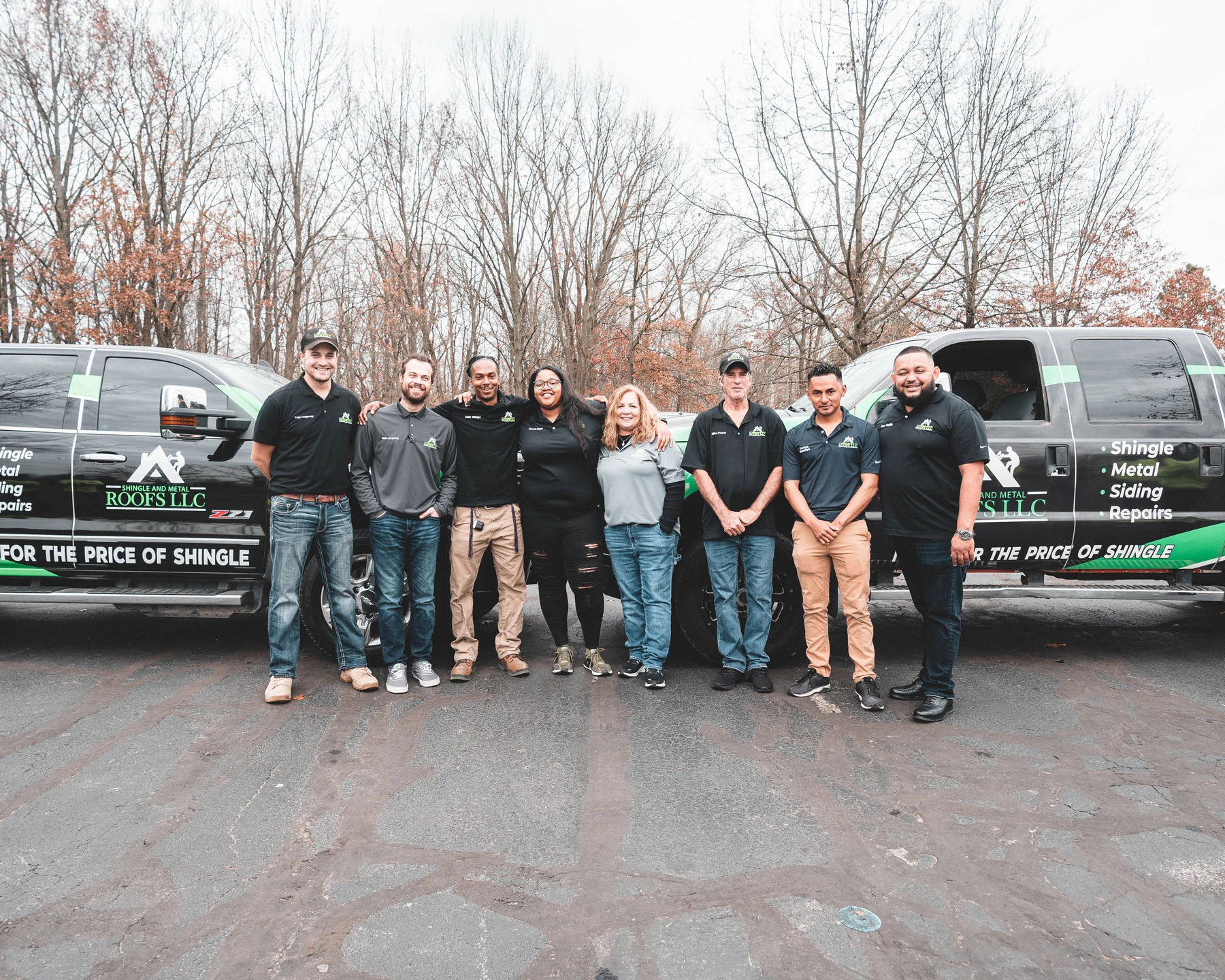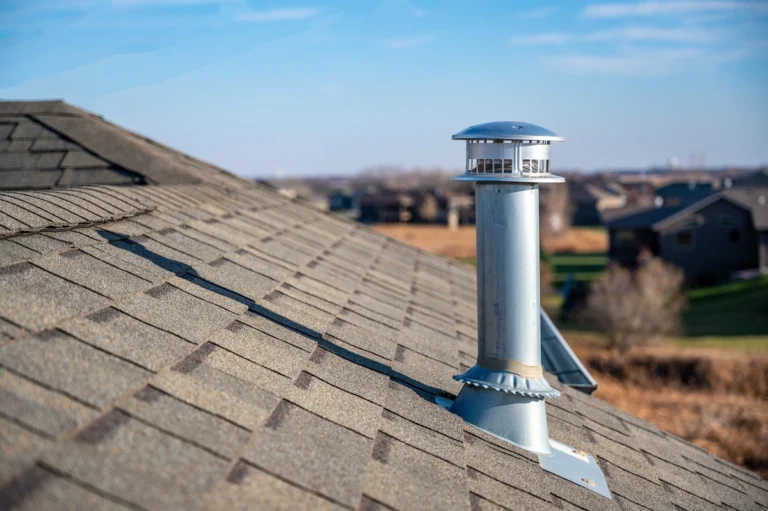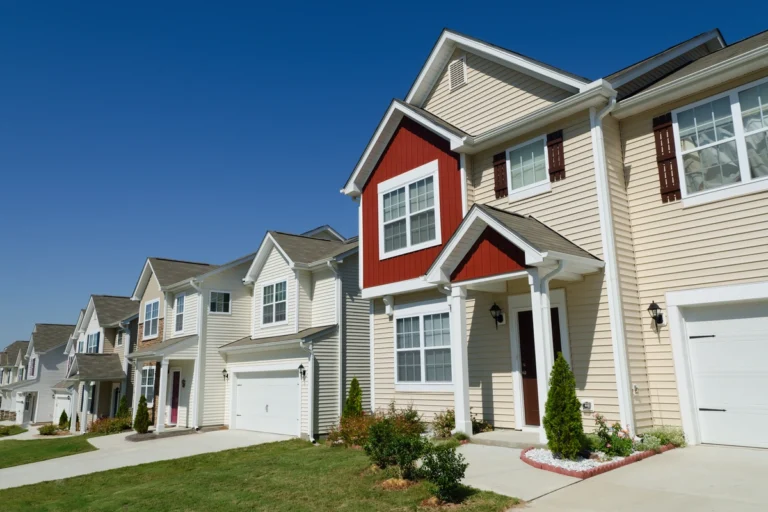
As a homeowner, maintaining your home’s roof is crucial to its longevity and overall structural integrity.
In the 2023 update of our Homeowner’s Roof Inspection Checklist, we’ve compiled an essential guide for safeguarding your investment and preventing costly repairs down the line. The homeowner’s roof inspection checklist includes checking for damaged, missing or broken shingles, inspecting the roof flashing, vents, and chimney, looking for signs of wear and tear, and clearing debris from gutters and downspouts.
Having your roof inspected by a professional roofing contractor at Shingle and Metal Roofs can help you identify potential issues early on, prolong the life of your roof, and maintain energy efficiency in your home.
Importance of Regular Roof Inspections
A regular detailed roof inspection is crucial to maintaining the integrity of your roof and identifying issues early, such as a roof leak or existing leak, standing water, loose shingles, wind damage, and wind related cracks and tiny cracks that can lead to roof failure. A roofing inspection will also check for split seams, dry rot, and damage from summertime winds.
Prolongs Roof Life
Regular roof inspections are crucial in prolonging the life of your home’s most critical protective barrier. A well-maintained roof can last 15 to 50 years, depending on the materials used, such as asphalt shingles, cedar shakes, or green roofs.
Proactive roof maintenance saves money by delaying the need for costly repairs or replacement and preserves your home’s structural integrity. For instance, detecting roof leaks early on prevents water damage to insulation and interior structures while maintaining proper ventilation reduces heat buildup in attic spaces.
Avoid Costly Repairs
Regular roof inspections play a crucial role in preventing costly repairs for homeowners. By catching potential issues early, you can save yourself from unexpected expenses and maintain the structural integrity of your home.
For example, damaged or missing shingles may allow water to penetrate the roof, leading to leaks and further damage to interior structures such as walls and ceilings.
Investing in preventive maintenance through regular roof inspections by professional roofing contractors or performing self-checks using a reliable homeowner’s roof inspection checklist ensures that any signs of wear and tear are addressed before they become extensive damages requiring expensive repairs or even complete roof replacement.
In this way, consistent checks on your property’s most vital protective layer contribute significantly towards preserving its value while maintaining optimal energy efficiency throughout your living spaces.
Maintain Energy Efficiency
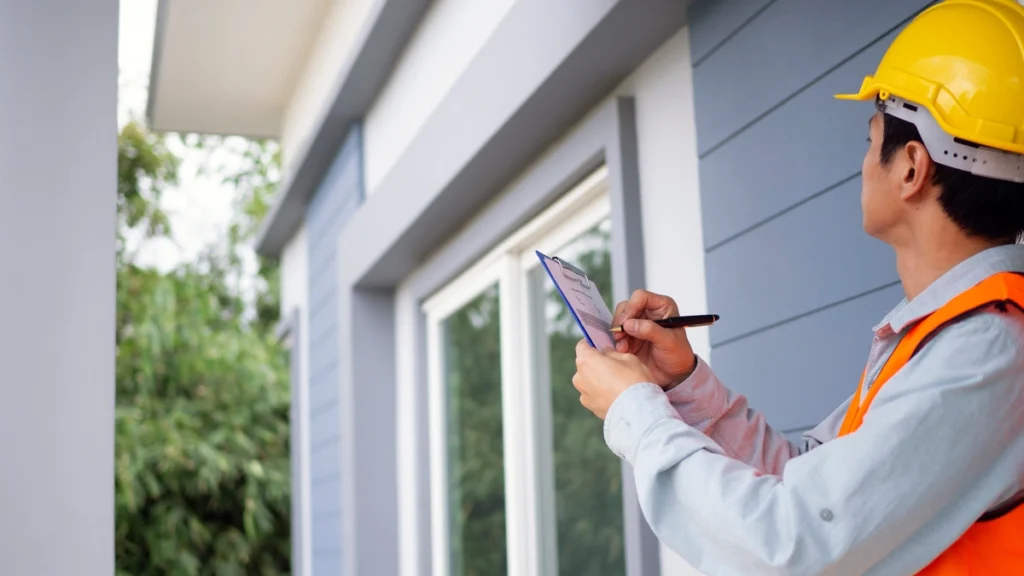
Maintaining energy efficiency in your home is a crucial aspect of overall home improvement, and regular roof inspections play an essential role in achieving this goal. A well-maintained roof contributes to optimal indoor temperature regulation, reducing the need for excessive heating or cooling systems usage.
For example, damaged or missing shingles can allow air leaks into your attic space resulting in increased strain on your HVAC system. Similarly, inadequate insulation due to wear and tear can lead to inefficient heat transfer between the indoors and outdoors.
By addressing these issues through regular roof maintenance checks and taking advantage of appliance upgrades through programs like the PG&E Energy Savings Assistance Program, you not only boost the durability of your roof but also improve the comfort, health, and safety aspects within your living spaces while keeping energy costs at bay.
Homeowner’s Roof Inspection Checklist
The homeowner’s roof inspection checklist includes checking for damaged, missing or broken shingles, inspecting the roof flashing, vents, and chimney, looking for signs of wear and tear, and clearing debris from gutters and downspouts.
Check For Damaged, Missing, Or Broken Shingles
One of the most important items on a homeowner’s inspection checklist is to search for damaged, missing, or broken roof shingles. Loose or cracked shingles on the roof surface can allow water to penetrate and damage your roofing system while potentially damaging your home’s interior.
Hail and wind are common reasons behind dislodged shingles, so paying attention is crucial after severe weather events. When examining your roof, look for any curled edges or cracks in the surface of the asphalt shingles.
Some other signs that point towards damaged shingles include finding tiny granules at the base of the guttering and visibly sagging areas between trusses due to wear and tear.
Inspect Roof Flashing, Vents, and Chimney
A roof’s flashing is designed to prevent leaks. Over time, however, the flashing can become damaged or worn out due to exposure to weather elements such as wind and rain.
During a roof inspection, contractors should check the roof field for cracked caulking, missing shingles, damage in the chimney cap, or mortar condition. Metal and vinyl flashing around chimneys, skylights, and attic vents should also be thoroughly inspected for signs of wear and tear.
Look for Signs of Wear And Tear
It is important to watch for signs of wear and tear on your roof during regular inspections. This can include cracked or deteriorating shingles, rusted flashing, or sagging gutters.
Ignoring these warning signs can result in costly roof repairs down the road, not to mention a shorter lifespan for your roof. In some cases, severe damage may even require a full replacement.
Regular maintenance and prompt repairs are key to preventing leaks and other issues that could potentially cause water damage inside your home. By identifying and addressing small problems before they become major, you can save time, money, and stress in the long run.
In addition to looking for signs of wear and tear during your inspection, also be aware of any unusual sounds or smells coming from your roof or attic space. These could indicate hidden problems such as mold growth or pest infestations that immediately need attention before pests are to blame for costly damages.
Clear Debris From Gutters and Downspouts
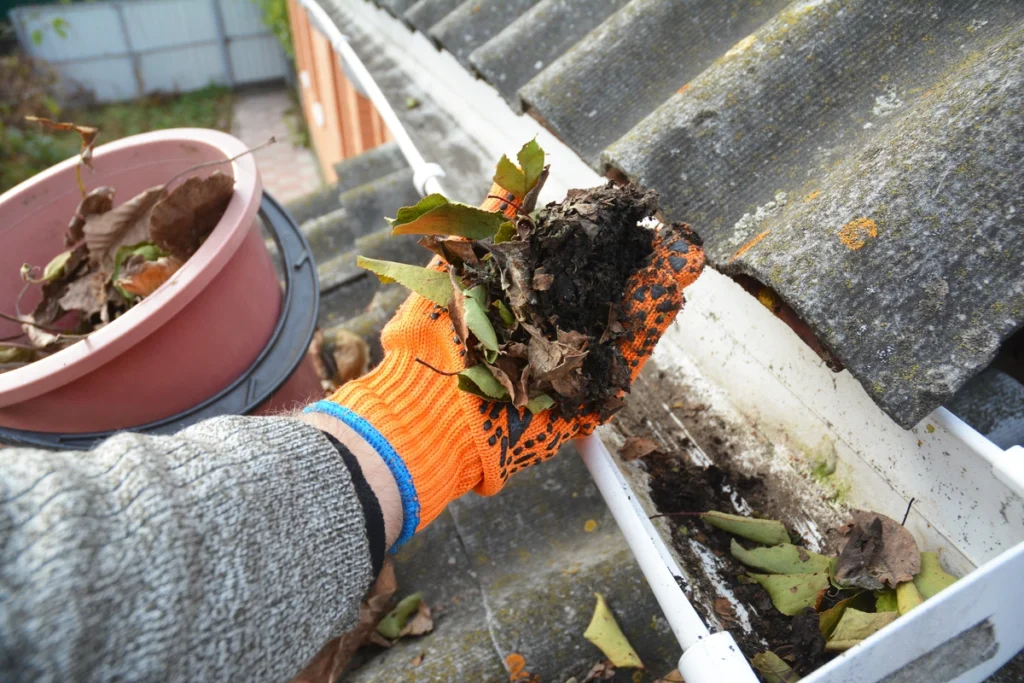
Clearing debris from gutters and downspouts is a crucial task that should be included in every homeowner’s roof inspection checklist. Clogged gutters can lead to water backup and overflow, which can damage the roof, siding, and even the foundation of your home.
Leaves, twigs, and dirt are some common culprits that cause clogging in gutters and downspouts.
While DIY gutter cleaning might seem simple, it requires specific tools, such as a sturdy extension ladder and a bucket for debris collection. A helper on the ground can also assist with steadying things from below.
Neglecting this maintenance task not only attracts pests but makes it easier for ice dams to form during winter, leading to structural damages and costly repairs later on.
Conclusion
Regular roof inspections and a thorough commercial inspection are essential for homeowners to save them from costly repairs and prolong the life of their roofing system. With our Homeowner’s Roof Inspection Checklist [2023 Update], you can easily identify potential issues like damaged shingles, worn-out flashing, clogged gutters, and more before they become a bigger problem.
Contact a reputable roofing contractor at Shingle and Metal Roofs for a complete inspection and professional evaluation and avoid further problems with your roof.

